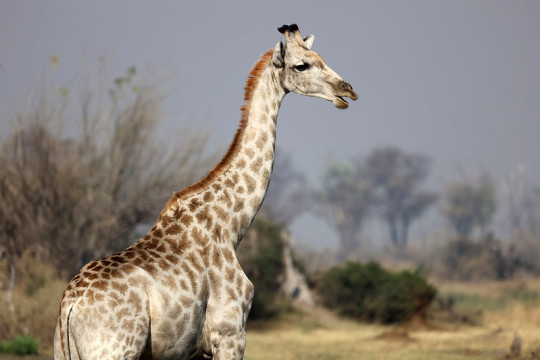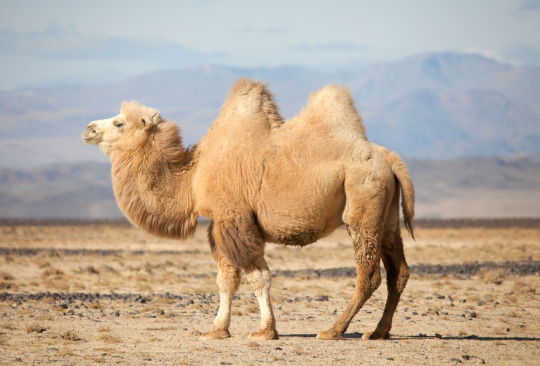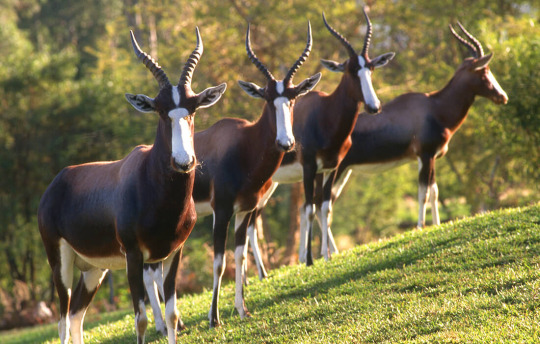#Giraffidae
Explore tagged Tumblr posts
Text

Luangwa giraffe Giraffa tippelskirchi thornicrofti
Observed by eliegaget, CC BY-NC
67 notes
·
View notes
Note
Could I request an okapi? Sooo many people don’t believe it’s a real thing when they come to my zoo
Absolutely!


#endangered species#democratic republic of the congo#central africa#african wildlife#endangered animal#endangered animals#okapi#mammalia#mammals#mammal#artiodactyla#giraffidae#animal polls#poll blog#my polls#animals#polls#tumblr polls
78 notes
·
View notes
Text

A southern giraffe (Giraffa giraffa) in Hluhluwe Imfolozi National Park, South Africa
by Nick Dean
#giraffe#southern giraffe#giraffa giraffa#giraffa#giraffidae#artiodactyla#mammalia#chordata#wildlife: south africa#wildlife: africa
68 notes
·
View notes
Text

if my pokesona is anything, it’ll be a girafarigokapi.. with a blue watermelon tail!
14 notes
·
View notes
Text


Reticulated Giraffe (Giraffa reticulata) - (c) SaritaWolf - please do not repost
7 notes
·
View notes
Text

Okapi Sketch
This is an okapi I sketched in my sketchbook using a photo reference. I think the legs came out too short, but I am proud of having captured its movement. Okapi may look horse- or zebra-like, but these Central African animals are actually rainforest-adapted cousins of the giraffe.
8 notes
·
View notes
Text

[Image description: A stylized digital drawing of an okapi sticking out his tongue to reach a leafy branch. End of image description.]
#art#digital art#my art#mammalia#fawnrats art#mammal#feral art#animalia#okapi#okapia#giraffidae#artiodactyla#giraffid#artiodactyl#ungulate#animal art#animal#Okapi Day
5 notes
·
View notes
Text





Okapi (Okapia johnstoni) (male, female, young), family Giraffidae
Like the closely related giraffes, okapis have a long black tongue, used to pluck up food, and while grooming.
Also like giraffes, okapis have ossicones: horn-like structures on the head. Unlike giraffes, however, only male okapis have ossicones.
Safaripark Beekse Bergen, taken July 2024
#animals#zoo#zoo photography#nature#okapi#Okapia johnstoni#giraffidae#safaripark beekse bergen#1st pic is male and last pic (and blurry in the one before) is the young#the rest are females#I had another picture in which you can see that the topside of the tongue is black (and pink) but it's all blurry so. this is what you get
4 notes
·
View notes
Text

World Okapi Day!
(source)
1 note
·
View note
Text

Nubian giraffe Giraffa camelopardalis camelopardalis
With red-billed oxpecker Buphagus erythrorhynchus
Observed by billyschofield, CC BY-NC
#Giraffa camelopardalis camelopardalis#Nubian giraffe#Giraffidae#giraffe#Buphagus erythrorhynchus#red-billed oxpecker#passerine#bird#non-ungulate#Africa#Kenya
110 notes
·
View notes
Text
Líf, lén, ríki, fylking, flokkur, ættbálkur, ætt, tegund, undirtegund.
Hér skoðum við gíraffann og hvernig hann er skilgreindur í vísindalega líffræði flokkunarkerfinu.
Náðu þér í hrikalega skemmtilegt og fróðlegt spil á natturuval.is
0 notes
Text

A giraffe (Giraffa camelopardalis) in the Okavengo Delta, Botswana
by flowcomm
#giraffe#giraffa camelopardalis#giraffa#giraffidae#artiodactyla#mammalia#chordata#wildlife: botswana#wildlife: africa
49 notes
·
View notes
Text









Balinese Zebra and Giraffe Masks
#animal#picture#mammal#live animal#giraffidae#giraffe#zebra#mask#animal figurine#figurine#animal mask#equine#png#transparent#transparent png
27 notes
·
View notes
Text


Reticulated Giraffe (Giraffa reticulata) - (c) SaritaWolf - please do not repost
0 notes
Text
[ID: A flag with 7 horizontal stripes. The stripes from top to bottom are dark pale brown, pale brown, white, dark orange, white, pale brown, dark pale brown. In the center of the flag is an orange octagon with a white outline.]
New gender alert?!
Softgiraffic [soft-giraffe-ick] is a gender where you felt connected to the giraffes and being soft, could also be the softness of giraffes


10 notes
·
View notes
Text
Round 3 - Mammalia - Artiodactyla




(Sources - 1, 2, 3, 4)
Our final order of mammals, and second order of ungulates is Artiodactyla, commonly referred to as “even-toed ungulates”. Artiodactyla is a large and highly diverse group which includes the living families Camelidae (“camels”, “vicuñas”, “guanacos”, and kin), Suidae (“pigs”), Tayassuidae (“peccaries”), Hippopotamidae (“hippopotamuses”), Balaenidae (“right whales” and “Bowhead Whale”), Cetotheriidae (“Pygmy Right Whale”), Balaenopteridae (“rorquals”), Eschrichtiidae (“Gray Whale”), Delphinidae (“oceanic dolphins”), Monodontidae (“Beluga Whale” and “Narwhal”), Phocoenidae (“porpoises”), Kogiidae (“Pygmy and Dwarf Sperm Whales”), Physeteridae (“Sperm Whale”), Iniidae (“South American river dolphins”), Platanistidae (“south Asian river dolphins”), Pontoporiidae (“La Plata Dolphin”), Ziphiidae (“beaked whales”), Tragulidae (“chevrotains”), Antilocapridae (“Pronghorn”), Giraffidae (“giraffes” and “Okapi”), Cervidae (“deer”), Moschidae (“musk deer”), and Bovidae (“cattle”, “antelopes”, “goats”, and kin).
Artiodactyls are typically defined by the fact that they bear most of their weight equally on two or four of the five original ungulate toes. However, all living members of the infraorder Cetacea have lost their toes, replacing them with flipper-like limbs. Many artiodactyls have a relatively large head, with an elongated and narrow skull. Some families have cranial appendages, which include true horns, antlers, ossicones, or pronghorns. True horns have a bone core that is covered in a permanent sheath of keratin, and are found only in the Bovids. Antlers are bony structures that are shed and replaced each year, only found in deer. Artiodactyls have a well-developed sense of smell and sense of hearing. Similar to many other prey animals, their eyes are on the sides of the head, giving them an almost panoramic view, so that they can keep an eye out for predators while grazing. This order is highly diverse, ranging in size from the rabbit-sized Java Mouse-deer (Tragulus javanicus) to the largest mammal, and possibly the largest animal to ever exist: the Blue Whale (Balaenoptera musculus). Most are herbivorous, but many are omnivores or even carnivores.
Male artiodactyls are usually larger than females. In the majority of deer species, only the males grow antlers, and the horns of female bovines are usually smaller or absent. As this is a very diverse group, social and mating behavior vary between species. They have a tendency to form larger groups, but some live alone or in pairs. Species living in groups often have a hierarchy, both among males and females. Some species also live in harem groups, with one male, several females, and their common offspring. In other species, the females and juveniles stay together, while males are solitary or live in bachelor groups and seek out females only during mating season. Generally, artiodactyls tend to have long gestation periods, smaller litter sizes, and more highly-developed young (usually called a “calf”). Most deliver 1 or 2 calves at a time, but some pigs can deliver up to ten. Newborn artiodactyls are precocial and are born with hair and open eyes.
The oldest fossils of artiodactyls date back to the early Eocene (about 53 million years ago).

Propaganda under the cut:
More than half the species in the family Camelidae are domesticated, with the only living wild camelids being the Vicuña (Lama vicugna) (ancestor of the domestic Alpaca), the Guanaco (Lama guanicoe) (ancestor of the domestic Llama), and the Wild Bactrian Camel (Camelus ferus) (NOT the ancestor of the Domestic Bactrian).
Camelids have true canine teeth and tusk-like premolars, which are separated from the molars by a gap.
Both the Bactrian Camel (Camelus bactrianus) (image 1) and the Dromedary (Camelus dromedarius) were domesticated in ancient times for riding, transport, ploughing, and as a source of milk, meat, wool, and leather. Today, the wild ancestors of both of these species are extinct, and only feral populations of domestic camels remain. The only truly wild camel species left is the Wild Bactrian Camel (Camelus ferus), which is critically endangered.
The Wild Bactrian Camel can survive on water saltier than seawater, something which no other mammal in the world seems to be able to tolerate, including the domestic Bactrian Camel.
In Aymara mythology, Llamas (Lama glama) are sacred beings. The Heavenly Llama is said to drink water from the ocean and urinates as it rains. According to Aymara eschatology, llamas will return to the water springs and ponds where they come from at the end of time.
Babirusas (genus Babyrousa) are unique for their prominent, upwards incurving, canine tusks, which pierce out through the flesh of the snout in males. The upper canine tusks continue growing, curving backward over the front of the face and towards the forehead. If a male Babirusa does not grind his tusks (achievable through regular activity), they can eventually keep growing and, rarely, even penetrate the individual's skull.
The Domestic Pig (Sus domesticus) was domesticated from the Wild Boar (Sus scrofa) beginning in the Neolithic, and is a result of two different domestication events in both the Middle East and China. They are mostly kept for meat and leather, but are also used in medicine and as pets. The Domestic Pig is one of the few omnivorous animals to be domesticated.
The endangered Chacoan Peccary (Catagonus wagneri) is the rarest of the 3 living species of peccary, with only around 3,000 individuals left in the world. It is a “Lazarus taxon”, as its genus was first described from fossil remains of the extinct Catagonus metropolitanus. The Chacoan Peccary only lives in hot, dry, thorny areas of the Gran Chaco.
While the semi-aquatic hippopotamuses were once more diverse, only two species of different branching lineages remain: the vulnerable Common Hippopotamus (Hippopotamus amphibius) (see gif above) and the endangered Pygmy Hippopotamus (Choeropsis liberiensis).
The Egyptian goddess Tawaret is depicted as a pregnant woman with a hippopotamus head, representing fierce maternal love.
Humans have hunted whales since prehistoric times, with depictions of whaling dating back to 6000 BC. Whales are hunted for their meat, blubber, and oil. Whale oil was in high demand for lighting lamps in the 18th century. The Sperm Whale (Physeter macrocephalus) was particularly prized for spermaceti, a dense waxy substance that burns with an exceedingly bright flame that is found in the whale’s spermaceti organ. Approximately 40% of Right Whales' (genus Eubalaena) (image 3) body mass is blubber, and thus they were known as the "right" whale to kill. Today, the North Atlantic Right Whale (Eubalaena glacialis) is the most critically endangered great whale, with around 372 individuals left in the world. While whale hunting has been significantly curtailed in recent years, whales still face threats from entanglement in fishing gear, boat strikes, underwater noise pollution, plastic and heavy metals build-up, and accelerating climate change. Cetaceans are still hunted in some countries.
The Humpback Whale (Megaptera novaeangliae) is known to not only fight back against their main predators, Orcas (Orcinus orca), but also to interfere with Orca hunting parties, rescuing their prey.
The mysterious Narwhal (Monodon monoceros) is known for the long tusk of the males, which is a protruding left canine thought to function as a weapon, a tool for feeding, in attracting mates, or for sensing water salinity. Some males may grow two tusks, occurring when the right canine also protrudes through the lip. Some females may grow a tusk as well, but it is usually smaller than the tusks of males.
The critically endangered Vaquita (Phocoena sinus) is the smallest of all living cetaceans, reaching a maximum body length of 150 cm (4.9 ft) for females or 140 cm (4.6 ft) for males. The Vaquita is one of the most endangered animals in the world, with around 6-11 individuals remaining. They are endangered primarily due to bycatch in gillnets from the illegal Totoaba (Totoaba macdonaldi) fishery.
The Baiji (Lipotes vexillifer) was a river dolphin, and the last surviving member of the family Lipotidae. It is classified as "critically endangered: possibly extinct", as no specimens have been seen in the Yangtze River in over 20 years. Heavy use of the river for fishing, transportation, and hydroelectricity were the likely causes of this unique species’ extinction. While some individuals may survive, their population is likely too low to recover. If indeed extinct, the Baiji's disappearance would be the first recorded extinction of a well-studied cetacean species to be directly attributable to human influence.
The Pronghorn (Antilocapra americana) is the last surviving member of its family. While they are sometimes referred to as antelope, this is an example of convergent evolution, and their closest living relatives are the Giraffids. The Pronghorn is the fastest land mammal in the Americas, and the third fastest land mammal on Earth, with running speeds of up to 88.5 km/h (55 mph). This running speed was likely an adaptation to flee the Pleistocene American Cheetahs (genus Miracinonyx), which are now extinct.
Giraffes are the tallest living land animals, with the largest being the Masai Giraffe (Giraffa tippelskirchi). Bull Masai Giraffes can grow up to 5.5 meters (18 feet) in height, and weigh 1,300 kilograms (2,900 pounds).
Caribou (Rangifer tarandus), also known as Reindeer, are unique among Cervids in that females may have antlers, although the prevalence of antlered females varies by subspecies.
Cervid antlers are a controlled form of bone cancer. Antler growth is tightly regulated by the activity of tumor-suppressing and tumor-growth-inhibiting genes. The cancer-suppressing genes that keep growth in check also protect against cancer in general, and documented cancer rates in deer that are five times lower than rates in other mammals.
Musk Deer (genus Moschus) are not true deer belonging to the family Cervidae, but rather their family is most closely related to Bovidae. They are known for the enlarged upper canines, forming sabre-like tusks, grown by the males for display.
The family Bovidae is the largest of the artiodactyls, and ungulates in general, accounting for nearly 55% of the ungulates. They also contain the majority of domesticated animals.
The critically endangered Saola (Pseudoryx nghetinhensis) is also known as the “Asian Unicorn” due to its rarity. The first photograph of a living Saola was taken in captivity in 1993. The most recent one was taken in 2013 by a movement-triggered camera in the forest of central Vietnam.
The African Buffalo (Syncerus caffer), specifically the Syncerus caffer caffer subspecies, the Cape Buffalo, is known as one of the most dangerous animals in Africa. With nicknames like "the Black Death" or "the widowmaker", Cape Buffalos can be highly territorial and defensive, and wounded animals are reported to ambush and attack hunters. (However, Elephants, Nile Crocodiles, and Hippos are still responsible for more deaths per year than African Buffalos are. Not to mention mosquitoes and venomous snakes.)
Domestic Cattle (Bos taurus) and Zebu (Bos indicus) were both domesticated from the now extinct Aurochs (Bos primigenius) during the Neolithic revolution. While the Aurochs is now extinct, Domestic Cattle are the most successful members of their lineage, with over 1.4 billion cattle in the world.
The Springbok (Antidorcas marsupialis) is the fourth fastest land mammal, clocked at 88 km/h (55 mph). They are primarily known for their pronking behavior: bouts of repeated high leaps of up to 2m (6.7 ft) into the air. In pronking, the Springbok performs multiple leaps into the air in a stiff-legged posture, with the back bowed and the white fur on its rump raised. This behavior displays the fitness of males, both to attract mates and to ward off predators, who won’t waste time chasing a healthy, fit Springbok.
The Domestic Sheep (Ovis aries), domesticated from the Mouflon (Ovis gmelini) between 11,000 and 9000 BC in Mesopotamia, and the Domestic Goat (Capra hircus), domesticated from the Bezoar Ibex (Capra aegagrus aegagrus) around 8000 BC, were domesticated to provide easy access to meat, hides, dung (used for fuel), wool, and milk. It is thought that the birth of agriculture and domestication of livestock is what led to human civilizations, as it was hard to be nomadic with a large herd of animals. Villages popped up around pens of livestock, leading to towns, leading to cities.
#animal polls#round 3#mammalia#aaaah sorry this is late I had to sleep before I could finish it again ;_;
154 notes
·
View notes